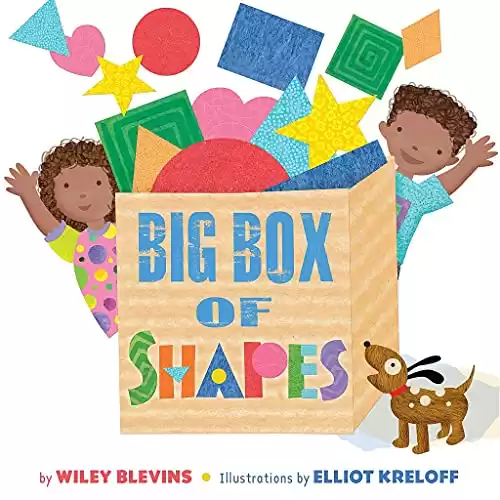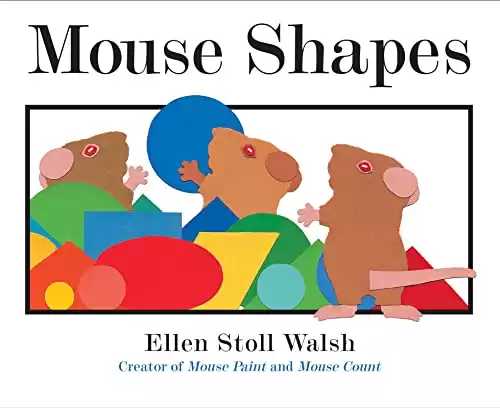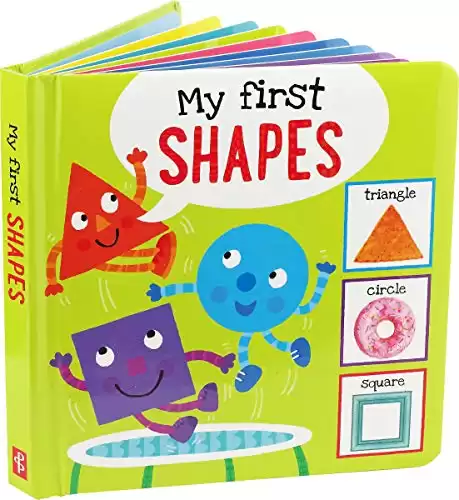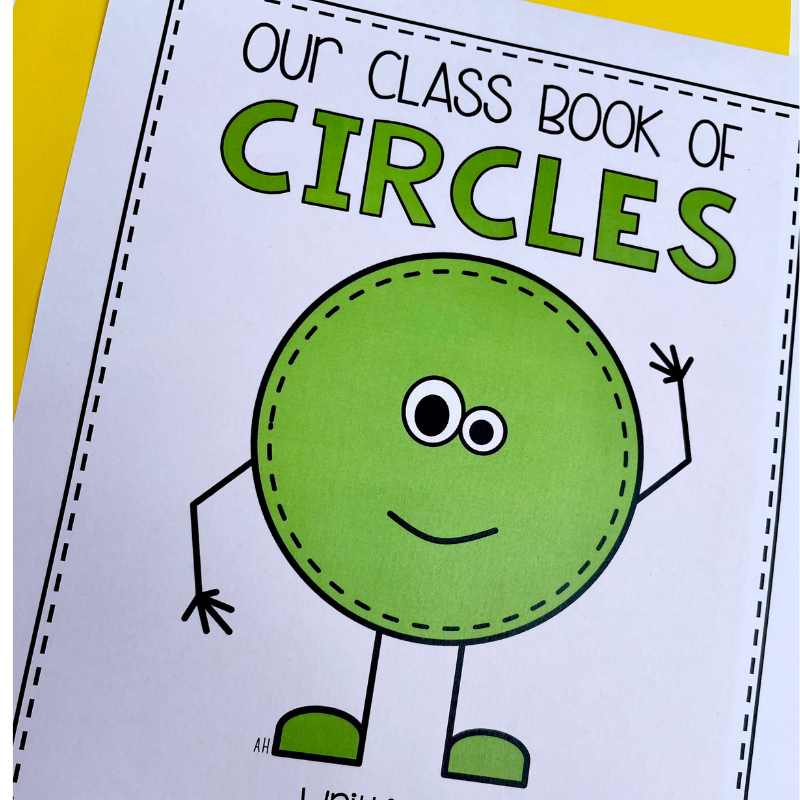As a parent you may have wondered, “when should a toddler know shapes?” Shape recognition is an important skill for young children and one of the earliest math skills. While every child develops at their own pace, there are general milestones to look out for.
In this blog post, we will explore when toddlers typically begin to recognize shapes, the factors that influence their progress, and ideas and simple activities for teaching shapes.
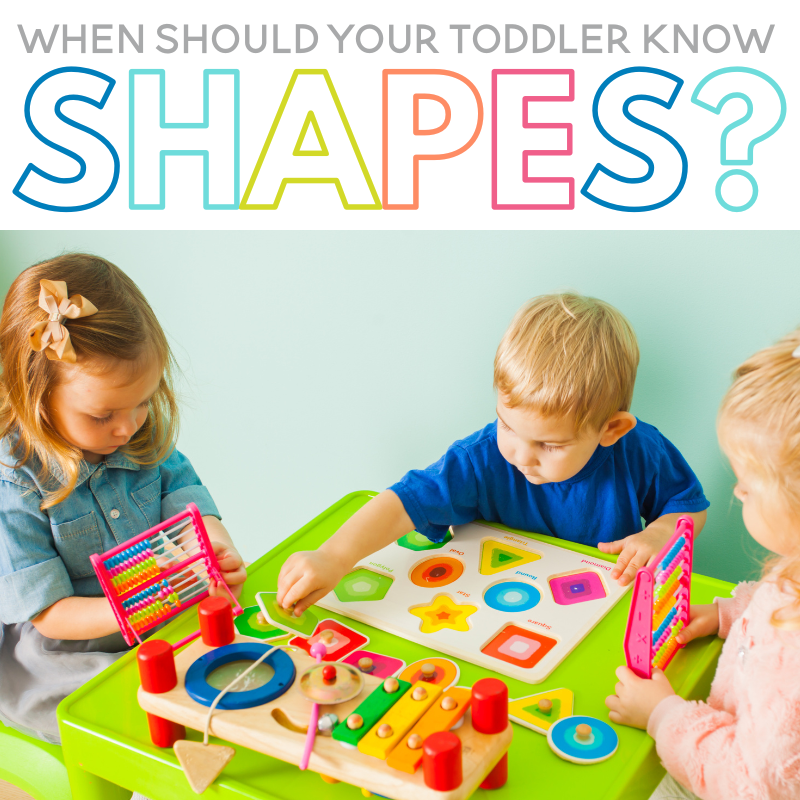
When should a toddler know shapes?
By the time a toddler is 2.5 to 3 years old, they should know the names of and recognize a few common shapes. However, here are some shape recognition milestones to be aware of:
Shape Recognition Milestones
The timeline for shape recognition can vary among toddlers, but here are some general milestones to consider:
Around 1-2 Years
Toddlers at this young age typically begin to show an awareness of basic shapes, such as circles and squares. They may be able to point to or identify these shapes in their environment or they simply be familiar with basic shape vocabulary words.
2-3 Years
By this age, most toddlers can recognize and name simple shapes like circles, squares, triangles, and rectangles when asked. They may start identifying shapes in books or toys, and even attempt to draw or trace basic shapes.
3-4 Years
Toddlers at this stage often demonstrate a broader understanding of shapes, including more complex shapes like ovals, diamonds, and stars. They can match and sort shapes, and may even start to identify shapes in their surroundings, such as in everyday objects or buildings.
Factors Influencing Shape Recognition
Several factors can influence when toddlers learn to recognize shapes:
Exposure and Experience
Providing ample opportunities for your child to explore shapes through toys, books, puzzles, and real-life objects can enhance their shape recognition skills.
Language Development
As toddlers expand their vocabulary, they can better grasp shape names and concepts. Encourage verbal communication about shapes by labeling objects and discussing their characteristics.
Cognitive Development
Shape recognition is linked to cognitive development milestones, such as visual discrimination and pattern recognition. As toddlers develop these skills, they become better equipped to recognize and differentiate shapes.
Supporting Shape Learning with Toys and Books
Toys and books can support a toddler’s study of shapes. Here are a few favorite books and toys to support your toddler’s shape-recognition skills:
Shape Toys
Introduce toys like shape sorters and puzzles, that allow your child to manipulate and match different shapes. Shape puzzles are a great way for little ones to start noticing shapes from an early age. These types of activities also promote problem-solving skills.
Shape sorter toys are also a popular choice for little ones and are great for any child’s development.
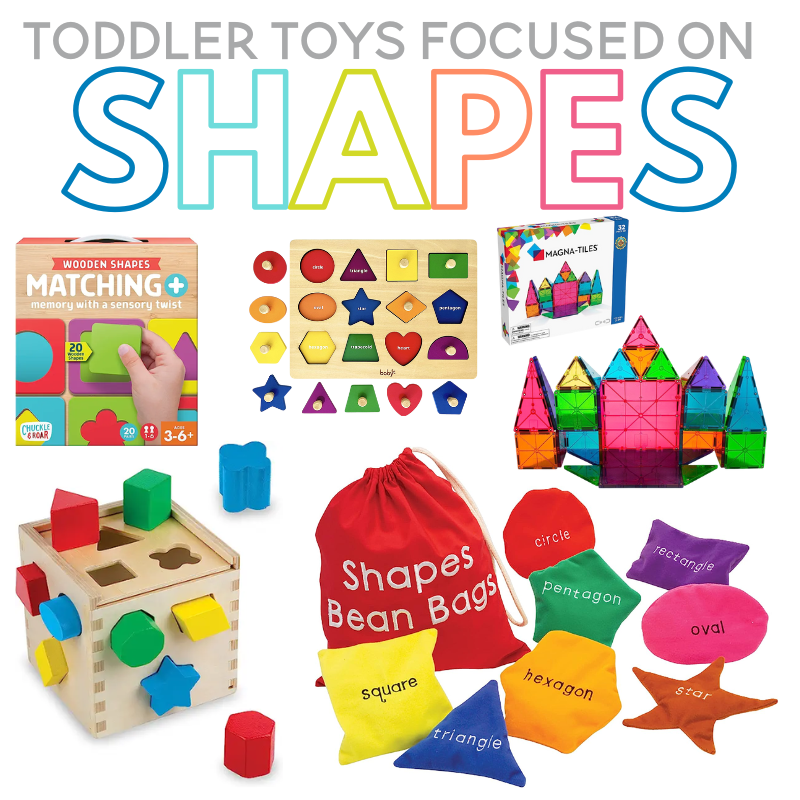
Shape Building Blocks
Building blocks offer a great opportunity to explore shapes. Encourage your toddler to build structures using blocks of different shapes. Even though blocks are traditionally 3-d more advanced shapes, the faces are 2-D shapes.
You can ask them to make towers using only square blocks or to create a house using triangular blocks. This activity helps them understand how different shapes fit together and form structures.
The LOVEVERY block set is a favorite in our house!
Read Shape Books
Incorporate shape-themed books into your reading routine. Point out shapes in the illustrations and encourage your child to identify them. Simply saying the different names of shapes helps build your child’s math vocabulary.
|
$8.99
|
$7.99
|
$5.57
|
Hands-on Activities to Teach Shapes
Hands-on activities are always the best way for little ones to learn new skills and there are plenty on fun ways to teach shapes to toddlers. Here are some ideas:
Everyday Shape Hunt
Make shape recognition a fun game by going on a “shape hunt” around your home or neighborhood. Encourage your child to spot shapes in objects, signs, and architecture.
You can also set up your own shape hunts in your classroom or home! Just print out pictures of each shape for little ones to find.
You can also check out these Preschool Shape Scavenger Hunts that will help little ones learn shape names and practice tracing them.
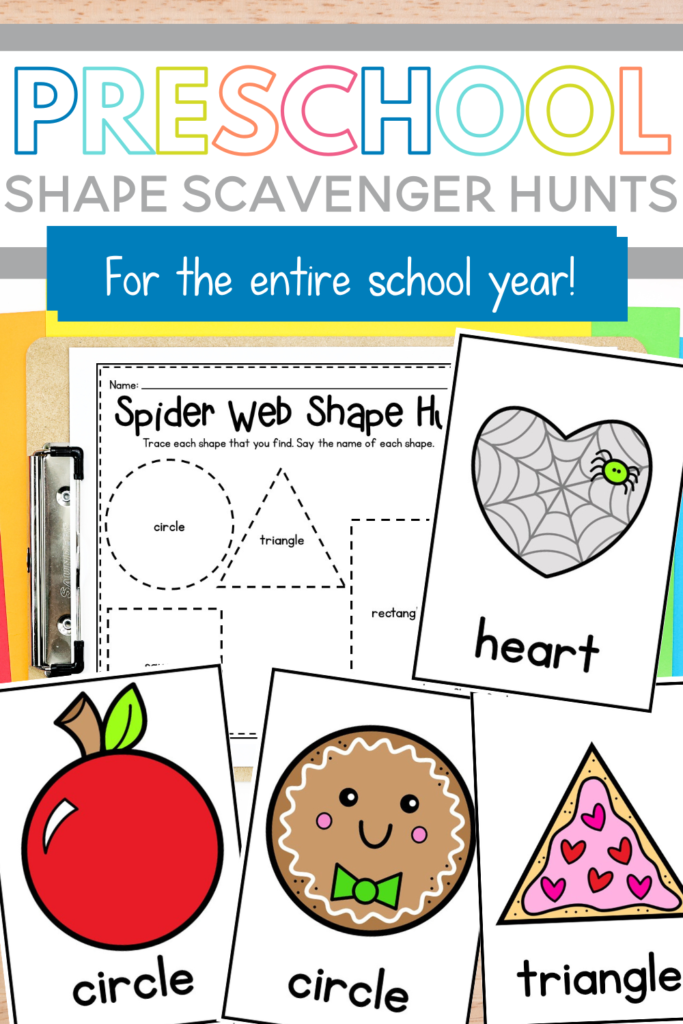
Art and Crafts
Engage your child in art activities that involve tracing, drawing, and cutting out shapes. This hands-on approach reinforces shape recognition and fine motor skills.
Crafts are another fun way to teach shapes. These shape crafts are perfect for preschool students and also help develop fine motor skills. Just print these simple shape crafts on different colors of paper for a fun activity.
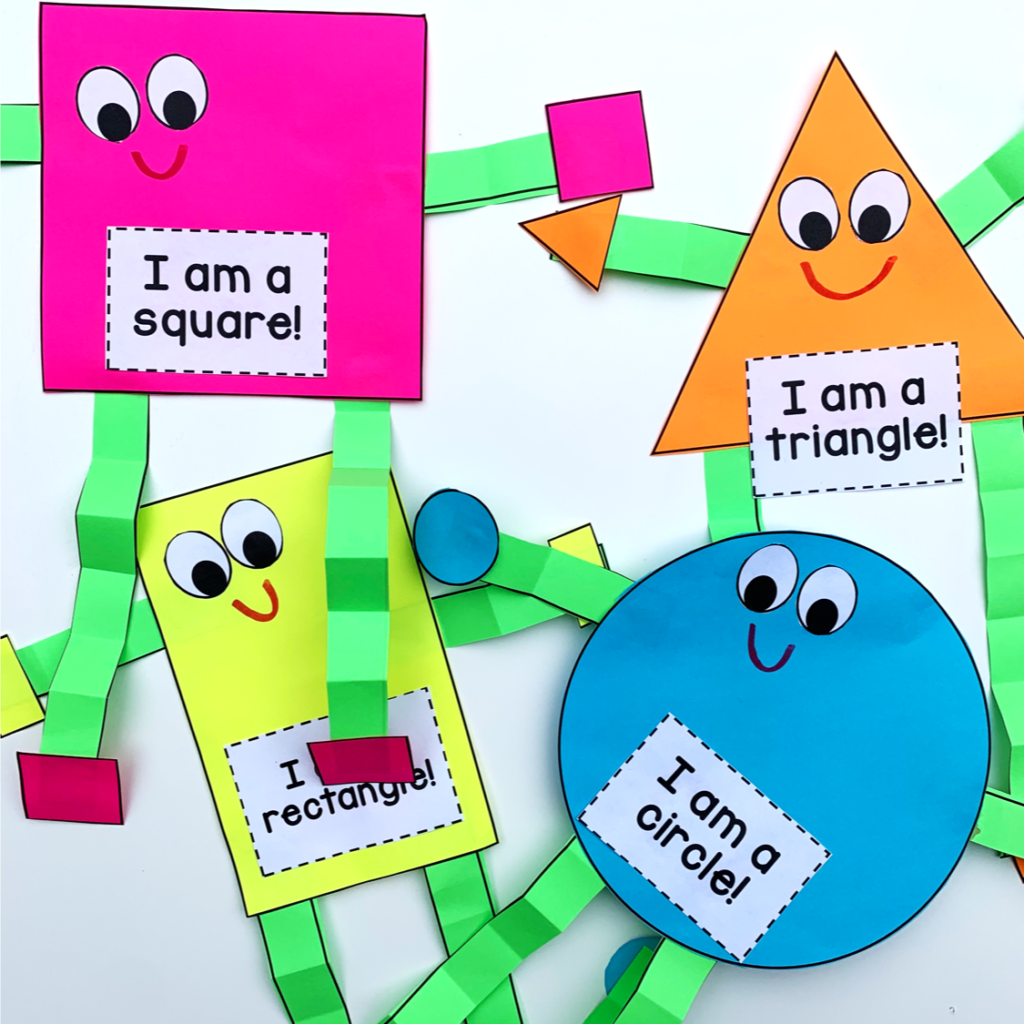
These simple shape crafts will help little one learning to recognize basic shapes.
Make Shapes
Playing with play dough is such a fun sensory experience for toddlers and it really strengthens those fine motor skills! Shape play dough mats are perfect for toddlers!
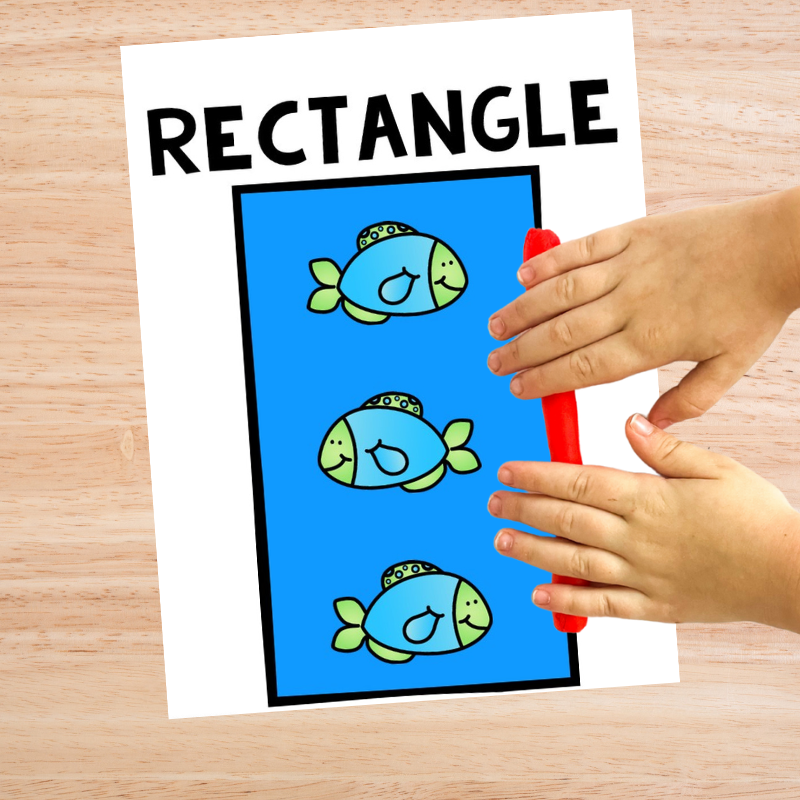
Playing with play dough is such a fun sensory activity for toddlers and it really strengthens those fine motor skills too.
Start by showing children how to roll the dough into snakes to create shapes. You can also ask your toddler to replicate the shapes you make or challenge them to create specific shapes on their own without the mats.
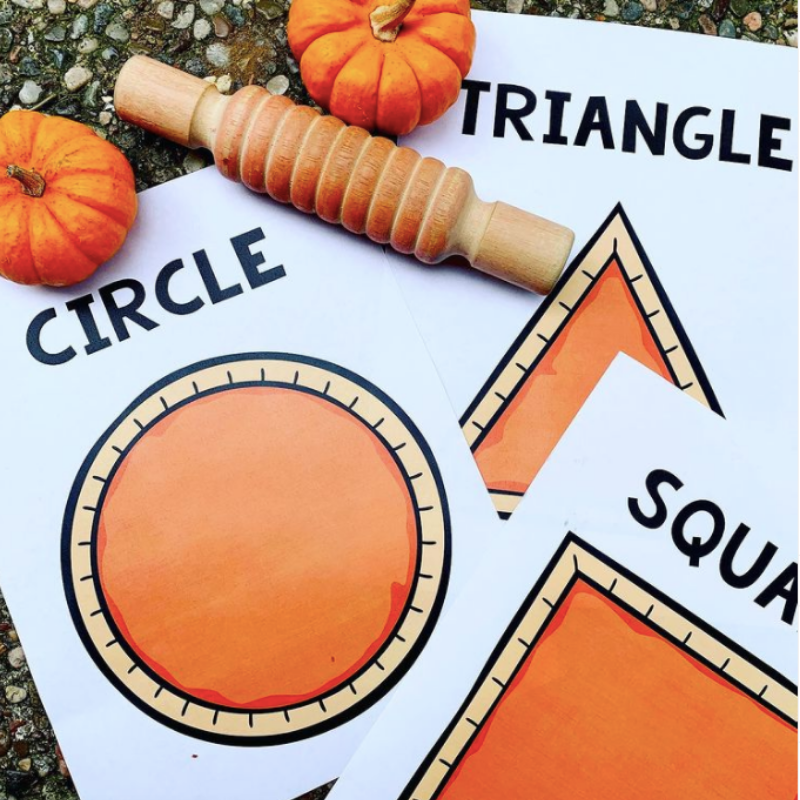
Shape play dough mats can be really helpful for little ones learning shape recognition. The bright colors and fun themes make these fun for toddlers and preschoolers.
Shape play dough mats for every month of the year are included in this toddler activities bundle. These shape mats are one of my favorite ways to help little ones practice building shapes. These mats can also be used with other hands-on materials too.
Want to make your own play dough? Check out this play dough without cream or tarter recipe.
Shape Sorting
Litlte ones can also practice sorting by shape. It can be helpful to your little one if they can see clearly defined areas for sorting. Sorting mats are great for this purpose!
These printable sorting mats can be used for sorting by type, size, shape or color.
Shape Collages
Provide your toddler with a variety of materials such as construction paper, foam shapes, stickers, and cutouts in different shapes. Ask them to create a shape collage by sticking the shapes onto a larger piece of paper. This activity allows them to explore shapes while engaging their creativity.
Encourage little ones to describe their creations using shape vocabulary and color words.
Dot Sticker Shape Tracing
Outlining shapes with stickers is a great way to practice shape recognition and strengthen fine motor skills.
You can simple draw a shape with a bold marker for toddlers to trace with stickers or check out these printable sticker activities. ;’l.

Sensory Bins
Create a sensory bin by filling a container with materials like colored rice, beans, or sand. Hide various shapes within the sensory bin and let your toddler explore and discover them. Encourage them to sort the shapes or make imprints of the shapes in the sensory material.
You can also print simple shape cards to use in sensory bins as well.
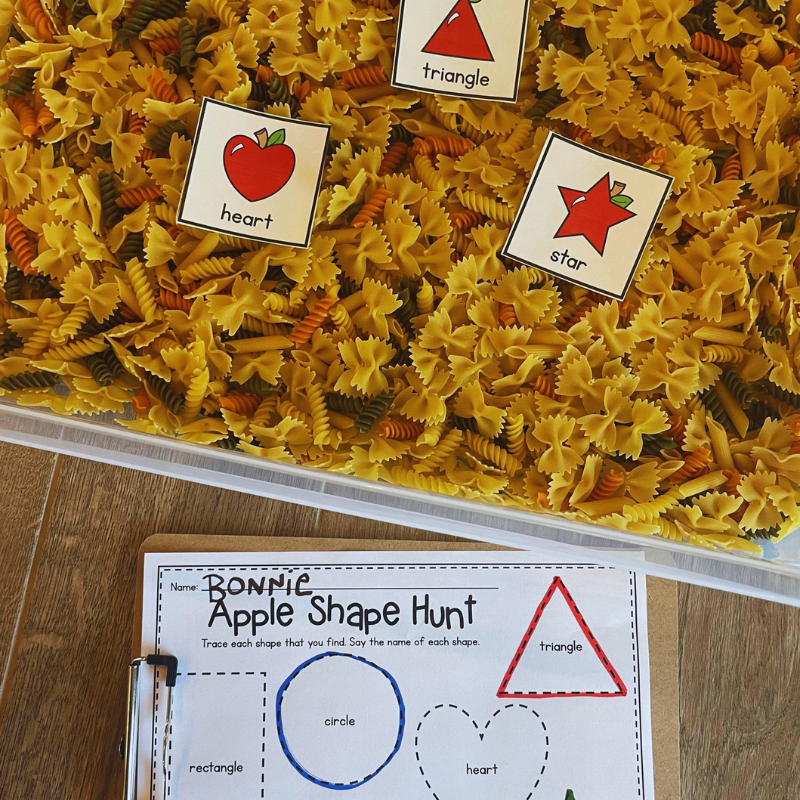
Just getting started with sensory bins? Read Getting Started with Sensory Bins for lots of ideas for creating fun sensory experiences for children.
Homemade Shape Books
Create your own shape-themed book with your toddler. You can simply draw different shapes on separate pages, and ask your toddler to color or decorate the shapes. Next, you can label each shape. Read the book together, emphasizing the shape names and pointing out the corresponding illustrations.
if you are teaching an entire class about shapes, try creating a class shape book. This book can be focused on one shape or include multiple shapes.
Just print the shape book cover and students will each create one page for the book. This is a homemade class book about circle.
Each student thought of an object that was the shape of a circle and drew a picture. Since this book was created with younger students, a teacher helped write their idea into the blank.
You can easily create class books for multiple 2-D shapes using this easy printable, Learning Shapes Class Book Set.
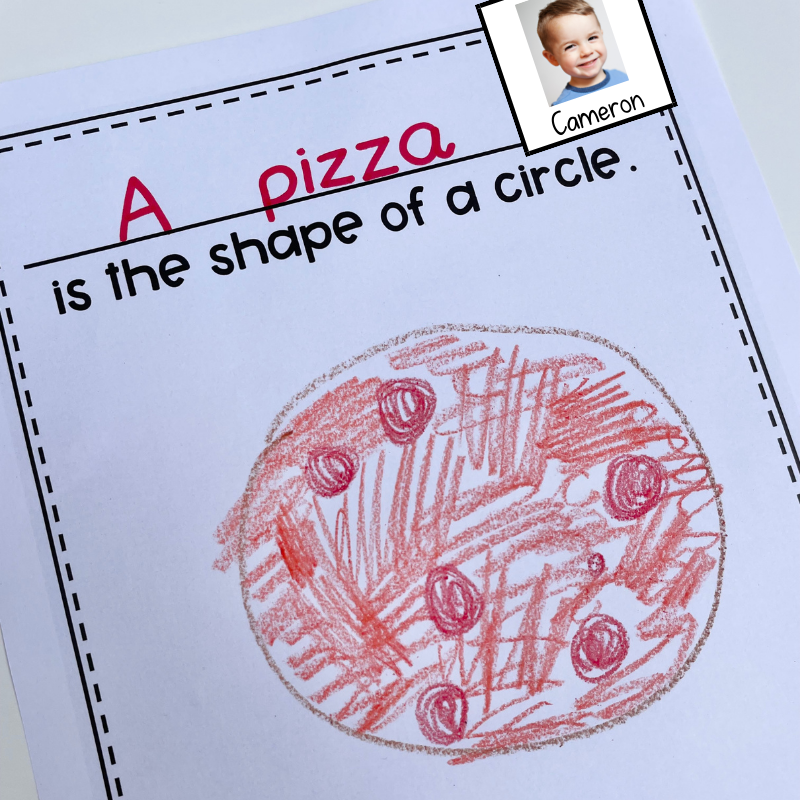
Remember to make these activities fun and engaging for your toddler. By using hands-on approaches, you can make the learning experience more interactive and enjoyable while promoting shape recognition skills.
Shape Worksheets
Simple worksheets like this shape line tracing worksheet can be helpful for little ones learning new shapes. Plus toddlers are practicing important skills like line tracing. You can download this preschool worksheet for free.
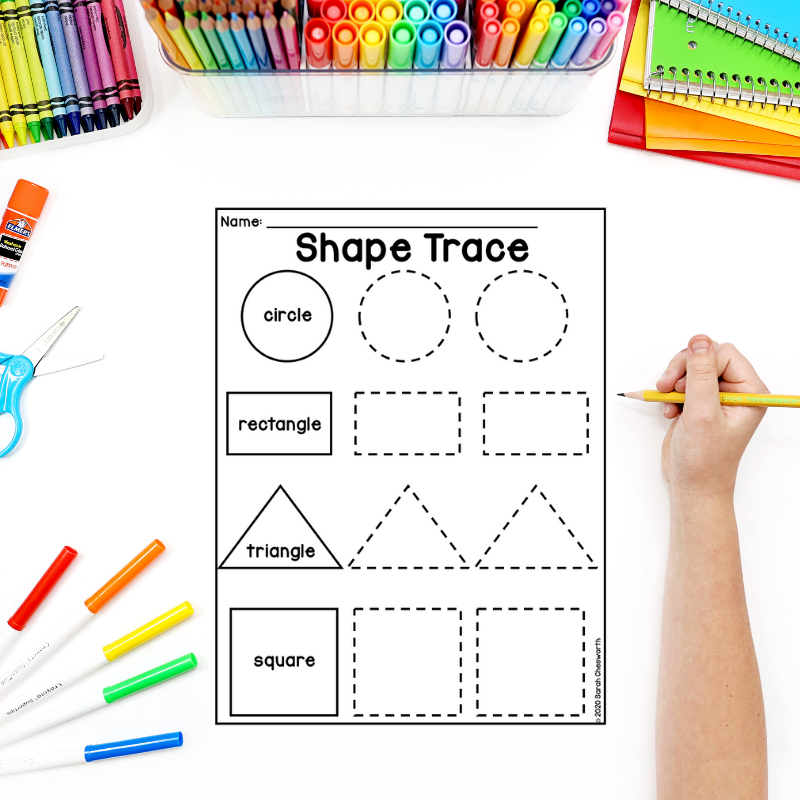
Many preschool workbooks are focused on shape and color recognition, so keep an eye out for resources at dollar stores or Target.
You can read more in this post, Interactive Shape Tracing Worksheets for Preschool.
Frequently Asked Questions About Learning Shapes
What shapes should toddlers learn first?
Start with basic shapes like circles, squares, triangles, rectangles, and ovals. These are the foundational shapes that toddlers should learn first. As they grasp these shapes, you can gradually introduce more complex shapes such as stars, hearts, and diamonds.
Can I teach 3D shapes to my toddler?
While toddlers may not fully understand the concept of 3D shapes, you can introduce them in everyday life. Start by pointing out real-life examples of 3D shapes like spheres (balls), cubes (building blocks), and cylinders (cans). However, focus primarily on 2D shapes initially.
How long does it take for toddlers to learn shapes?
The learning process varies from child to child. Some toddlers may quickly grasp shapes, while others may take more time. Consistent exposure and practice will eventually help your toddler develop shape-recognition skills.
Are there any warning signs if my toddler is struggling with shape recognition?
It’s important to remember that children develop at different rates. However, if your toddler consistently shows difficulty recognizing basic shapes or struggles with other areas of development, it may be helpful to consult with a pediatrician or early childhood specialist for further evaluation.
How can I help my toddler understand the differences between similar shapes?
Try to point out the distinguishing features of similar shapes to help your toddler differentiate between them. For example, you can explain that a triangle has three sides, while a square has four equal sides. Use hands-on activities where your toddler can compare and sort shapes to reinforce these differences.
Should I correct my toddler if they misidentify a shape?
It’s important to be patient and supportive when your toddler is learning shapes. If they misidentify a shape, gently correct them by pointing out the correct name or shape. Avoid criticizing or pressuring them, as this may discourage their learning progress. Learning should always be a fun and positive experience for children.
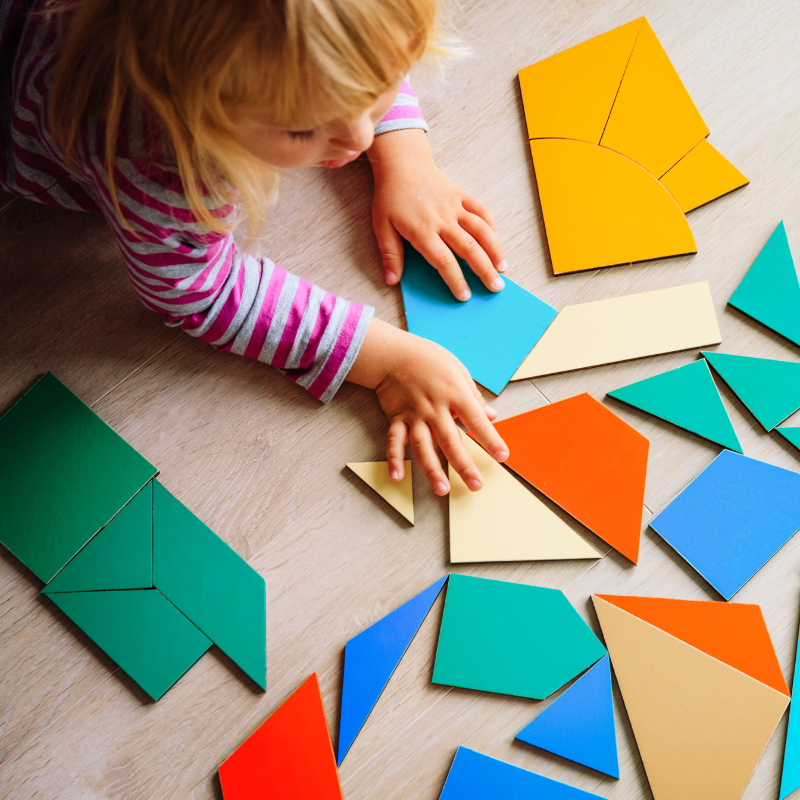
Final thoughts: When should a toddler learn shapes?
In conclusion, the question of when toddlers should know shapes does not have a one-size-fits-all answer Each child develops at their own pace, and it’s important to remember that the process of learning shapes is gradual. While some toddlers may quickly grasp basic shapes like circles, squares, and triangles, others may take more time to fully recognize and identify them.
The key is to provide a supportive and engaging learning environment for your toddler. Incorporate shapes into everyday conversations, play shape-related games, and provide hands-on activities that allow for exploration and discovery. By integrating shapes into their daily routines, you can help foster their shape-recognition skills and promote cognitive development.
Remember, learning shapes is a process that goes beyond simple identification. It involves understanding spatial relationships, recognizing shapes in various contexts, and even extending into the realm of three-dimensional shapes. As your toddler grows, they will continue to refine their shape recognition skills.






